Windows has an inbuilt mechanism that checks the hard drive and reports errors if anything isn’t working as expected. In case a problem is detected, the user gets the following error message:
Windows detected a hard disk problem. Back up your files immediately to prevent information loss, and then contact computer manufacturer to determine if you need to repair or replace the disk.
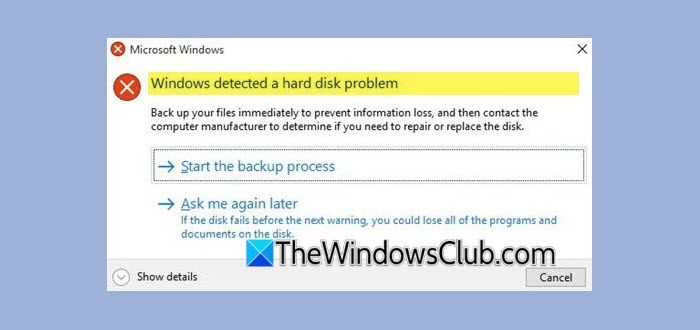
If you see such a message box pop up, back up your files and follow the instructions in this post to fix the problem. Do not disable this useful warning as it is meant to alert you of hard disk failure.
Windows detected a hard disk problem
While the issue might be with the hardware or connections, before sending the system to a repair technician we could try the following troubleshooting steps to isolate the issue. Here we are not showing how to turn off this warning – you could do it by turning off Windows Disk Diagnostics using GPEDIT or REGEDIT, or SMART checking via BIOS settings. We are showing you how you can proceed with troubleshooting and resolving the issue.
1] Run Disk Error Checking utility
To run a Disk Error checking on the drive manually, proceed with the following steps:
Close all open applications and then press Win+E to open the File Explorer which shows the list of drives. We need to scan all the drives shown in the list one by one. Let’s start with D: for example.
Right-click on the drive and select Properties.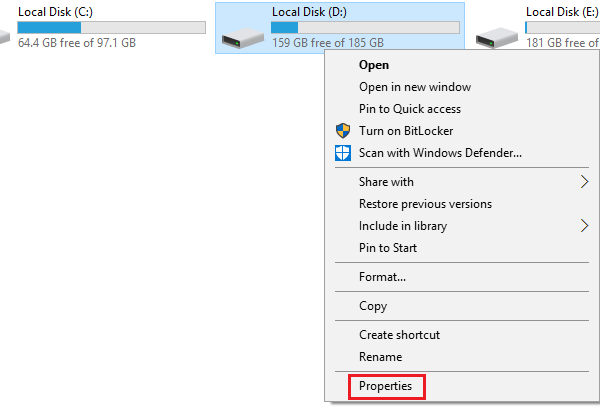
In the Tools tab, click on Check under the Error Checking column and then click on Scan Drive.
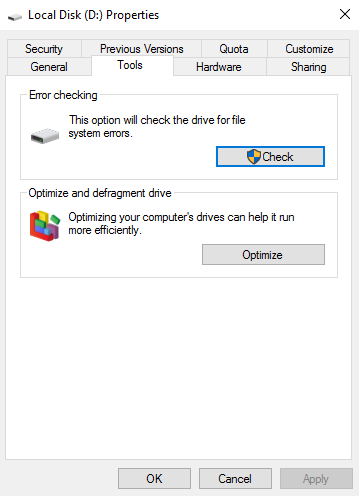
This makes Windows scan the selected system errors disk and resolve them if possible. If some of the files on the partition are being used, the scan will be executed on restart.
Restart the system after the process and verify the resolution. If it doesn’t work, proceed to the next step.
2] Use Storage Diagnostic Tool
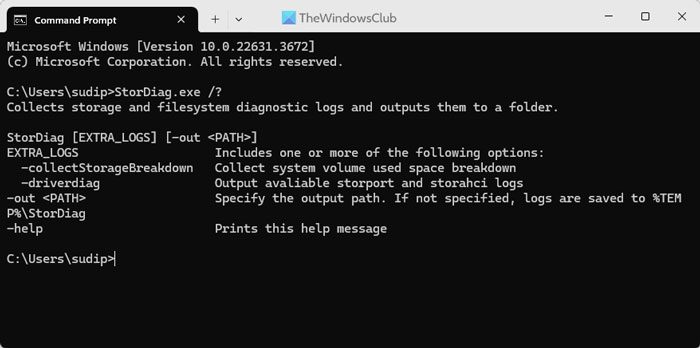
You can use the Storage Diagnostic Tool in Windows 11/10 to collect and analyze storage-related data, which can help them troubleshoot Hard Disk and storage diagnostic issues. By running a single command, the tool can collect all storage and file system-related data and diagnostic logs and output them to a folder.
Read: How to tell if SSD is failing in Windows?
3] Use WMIC to check Hard Disk Health
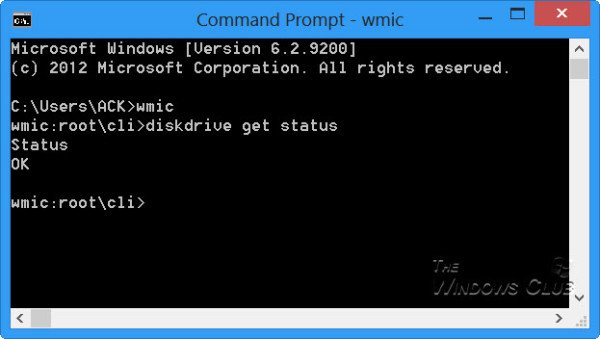
To check the status of your Hard Disk health, you can use the WMIC or Windows Management Instrumentation Command-line. The WMIC is a command-line and scripting interface that simplifies the use of Windows Management Instrumentation (WMI) and systems managed through WMI. Using the WMI Commands, it can help you carry out several administrative tasks. This is like taking a second opinion about the health of your hard disk.
3] Use 3rd party free Hard Disk checker
Although Windows computer systems come with a built-in disk error checking scanner, which offers a lot of command-line options to scan the hard drive for Errors and Bad Sectors, you can use a third-party tool for that.
The fact that this error appears on your screen signifies that the disk cannot repair itself automatically. Ideally, both the disk and the Windows operating system try to detect the error. If Windows displays the error, it in itself means that the disk is probably failing. However, a few interfering programs could also cause the issue as well. To understand what is affecting you, you could use a 3rd party freeware.
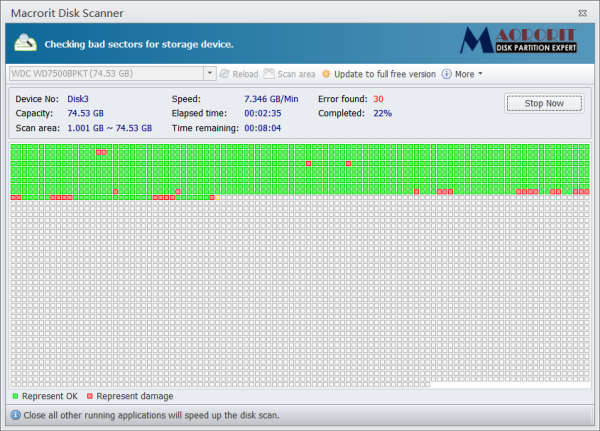
- HD Tune hard disk utility. HD Tune is a hard disk utility, and a freeware tool for Windows OS, which uses a set of simple steps to check the status of hard drives (internal, external, or extractable). Apart from checking the status, the application is measuring the drive’s performance, errors during scanning, health status, and much more.
- Macrorit Disk Scanner can also help you fix bad sectors. The program displays the complete statistics on the top panel which includes the device selected, the speed of the scan, number of errors found, scan area, elapsed time, and estimated time remaining to complete the scan.
- EaseUS Partition Master Free includes a surface test that can scan for and fix bad sectors.
- AbelsSoft CheckDrive offers an easy way to check and fix errors on your PC’s hard drives. It even supports Solid-state drives (SSD).
- HDDScan is a freeware utility for hard drive diagnostics (RAID arrays, Flash USB and SSD drives are also supported). The program can test storage device for errors (Bad-blocks and bad sectors), show S.M.A.R.T. attributes and change some HDD parameters such as AAM, APM, etc.
4] Use the hard disk diagnostic tool provided by your HD manufacturer
If you know the brand of your hard disk (mostly the same as the brand of your computer), download the specific diagnostic tools provided by the manufacturer. Run those tools and see if they help your cause. Here are a few links:
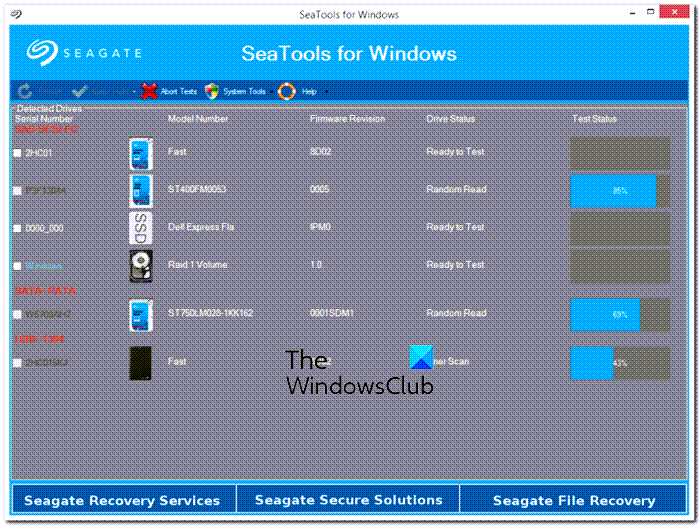
- Windows Surface Scanner from DTI Data is a Chkdsk alternative to fix Hard Drive Bad Sectors.
- HDD Bad Sectors Repair is a good program to repair Maxtor hard drives.
- Seagate SeaTools is a powerful diagnostic application that helps you to quickly determine the condition of the disk drive and Hard Disk health of an external hard drive and computer
- Data Lifeguard Diagnostic for Windows PC performs drive identification, diagnostics, and repairs on most Western Digital hard disk drives.
Finally, if all the above steps fail, you can safely assume that the issue is with the physical hardware and might consider replacing the hard drive.
Related read: A disk read error occurred, Press Ctrl+Alt+Del to restart.
How do I get rid of a hard disk error message?
Restart your PC and reconnect the hard drive to resolve a hard disk error message. Open the Command Prompt and run as administrator. Type “chkdsk [drive letter]: /f /r /x” and press Enter to check and repair disk errors. This process should help clear the error message.
How to fix No hard disk detected?
To fix “No hard disk detected,” first, ensure all connections are secure. Restart the system and check the BIOS settings to ensure the disk is recognized. If possible, test the hard disk on another computer. Access Device Manager, expand Disk Drives, and update drivers. If the disk is not visible, it may need replacement.